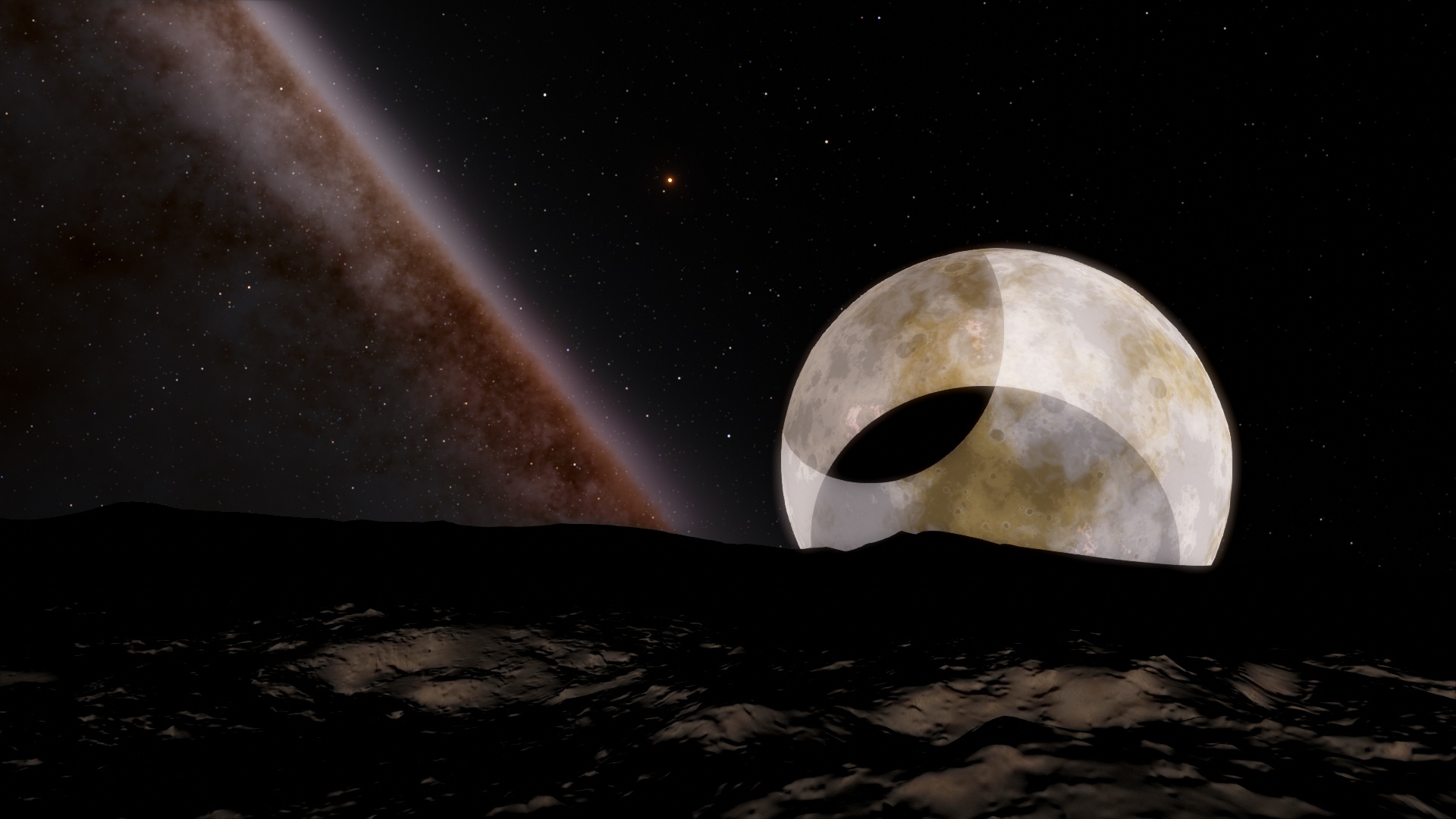Here is the explanation: This is from a binary star system where one star is red, and the other is blue. Both stars are eclipsing the moon in the foreground, onto the planet in the background. In the areas where light from both stars falls, the planet looks as it normally would. In the upper-most circle the blue starlight is filtered out, but the red gets through. In the bottom circle the red light is filtered out, and only the blue gets through. In the center portion the light from both stars is blocked, so it gets no light.
Because this planet has no atmosphere, the shadows remain crisp along its surface.


Does the planet in question orbit one star at a time? I’d be curious to see if there’s ever an alignment condition where one half of the planet is bathed in blue light and the other half in red. Something like this (a clip I saved from a Processing project where I was learning about directional light):
That would be something to see!
I thought about this too… great use of that graphic! I bet you had no idea back then you’d be using it for this!
I had to remind myself that the two stars were also orbiting each other, so all of that would change periodically! The planet would have a “blue era” and a “red era” depending on which star was in front of the other. …Maybe?